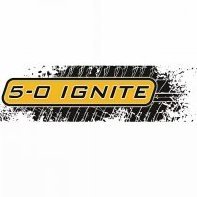Limits of stock 5/16" (8mm) fuel lines
Announcements
-
Similar Content
-
Latest Posts
-
By drifter17a · Posted
Found it thanks, the front tie rod end should be torqued to 40nmish -
By drifter17a · Posted
Ok I thought my allow had a flat back but it does have grooves for the spacer nut/ no cutting needed bolt and nut sticking out from the spacer around 12mm and the groove is around 24mm so all good appreciate the help chaps -
By drifter17a · Posted
Back in 2016 bought a set of front and rear bracket set and changed all 4 corner discs and caliper i was checking the car and seen rust like or in another word crumbled part of the bracket which came off with a air blow is this normal? This had happened in two areas and car from 2016 has mostly been in garage/ doing less than 2000 miles over past 8 years or so pic with areas highlighted in red https://ibb.co/NtmWXZt also anyone knows the torque spec for the bracket as want to retorque them, one bolt had come off half way ! -
By 180 wanabe · Posted
So if I was to spend 400r money and remember I am only here because I need 4 doors because of an incoming kid otherwise I would be looking at a lexus RCF what am I loosing out on other than fuel economy but gaining in power and space / V8 sound on Chrysler 300c STR Vs nissan 400r?, I will admit that buying the VE bomadore was an eye opener into build quality compared to Jap cars... https://www.carsales.com.au/cars/details/2020-chrysler-300-srt-core-auto-my20/SSE-AD-18201088/ but this one is on the same money... -
If you're friendly with a workshop that has a large scraps bin you can always ask to dispose of there. Otherwise theres always the places like sims metal etc depending where you are at https://recyclingnearyou.com.au/cars
-








Recommended Posts
Create an account or sign in to comment
You need to be a member in order to leave a comment
Create an account
Sign up for a new account in our community. It's easy!
Register a new accountSign in
Already have an account? Sign in here.
Sign In Now